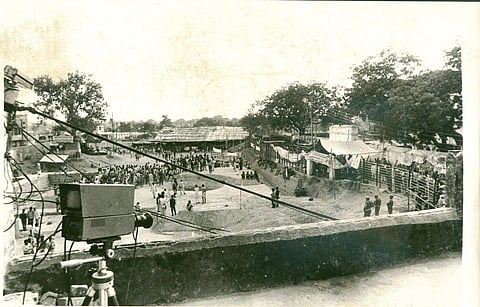

Today is going to be a historic day for India, politically and otherwise. The most-awaited yet much-delayed verdict on the Ram Janmabhoomi-Babri Masjid case will be delivered by a five-judge constitutional bench headed by the Chief Justice of India, Ranjan Gogoi. While security is being stepped up not just in Uttar Pradesh, but in different parts of the countries as well, it is important to understand the backdrop of the case before listening to the verdict. Below, we try to answer some Frequently Asked Questions about India's oldest dispute ever.
Where is Ayodhya?
Present day Ayodhya is located in Ayodhya district, also known as Faizabad district of Uttar Pradesh. It acquires importance because it is the birthplace of Lord Rama, one of the avatars of Lord Vishnu. This city is considered holy for Hindus because it forms the backdrop of the epic Ramayana, which is essentially the story of Lord Rama.
What happened in the past according to the history books?
As per Hindus, Babri Masjid was built in the year 1528 by one of the generals of the Founder and first emperor of the Mughal Dynasty, Babur. The general in question, Mir Baqi, is said to have not only destroyed a pre-existing temple, but also at the very same spot which is said to be Ram Janmabhoomi, the birthplace of Lord Ram, built the Babri Masjid.
Has the unrest always been there?
No. Both Hindus and Muslims were known to worship at the site, Muslims worshipped inside it, while Hindus worshipped outside.
How did the dispute begin?
In 1885, the first suit was filed in Faizabad district court for permission to build a canopy on the Ramchabutra (raised platform) outside the disputed temple-mosque. It was filed by Mahant Raghubir Das. On December 22, 1949, idols of Rama Lalla appeared inside the mosque, allegedly placed by Hindu groups. The government declared the area as disputed and locked the premises down.
What events lead up to the demolition of the masjid?
Matters became more serious when Gopal Singh Visharad and Mahant Paramhans Ramchandra (Head of Ram Janmabhoomi Nyas) filed suits seeking permission to offer prayers to the lord. The district court allowed for prayers, but the inner courtyard remained closed. Then, Nirmohi Akhara, one of the akharas recognised by the Akhil Bharatiya Akhara Parishad, filed a suit claiming to be custodians of the disputed site. Sunni Central Board of Waqf filed a suit against the placement of the idols inside the mosque.
When did the demolition happen?
Bharatiya Janata Party and their leader LK Advani threw their weight behind the movement. In 1990, Vishwa Hindu Parishad members partially damaged the mosque. And on December 6, 1992, a Rath Yatra led by LK Advani ended at Ayodhya and the Babri Masjid was demolished by VHP, BJP and Shiv Sena members. Nation-wide protests broke out, including severe riots in Mumbai, and it became a national issue.
Where there any investigations to find out if there really was a temple prior to the masjid?
In 2003, the Archaeological Survey of India was responsible for finding out if a temple really existed in the past. They found evidence that, indeed, there was a temple as they found "pillar bases" with motifs which were not part of the mosque. Muslim groups disputed the findings.
Who were implicated?
Two criminal cases were filed. The first against BJP leaders LK Advani, Murli Manohar Joshi and Uma Bharti, VHP leaders Ashok Singhal and Acharya Giriraj Kishore and others. The second was filed against Pawan Pandey, the UP Chief of the Shiv Sena and 23 others. Both cases have been merged, as per the Supreme Court's orders, and are being pursued in Lucknow. The Special CBI court in Lucknow charged senior BJP leaders LK Advani, Murli Manohar Joshi and Union Minister Uma Bharti with criminal conspiracy in 2017 and they are currently out on bail. The Supreme Court asked the CBI court in Lucknow to deliver its verdict on this criminal case by April 18, 2020.
What is today's verdict all about?
In 2010, the three-judge bench of the Allahabad High Court directed a three-way partition of the disputed land. They ruled that Bhagwan Ramlalla Virajman, Nirmohi Akhara and Uttar Pradesh Sunni Waqf Board, the three prominent parties of the land, were in joint possession of it. The verdict which will be delivered today will be on appeals against the verdict given by the Allahabad High Court. The Nirmohi Akhara wants the management rights of the premises and wants to construct a temple on it, Bhagwan Ramlalla Virajman wants the entire land and stated that no part should be given to Muslim parties or to the Nirmohi Akhara and Sunni Waqf Board wants the mosque to be restored.
